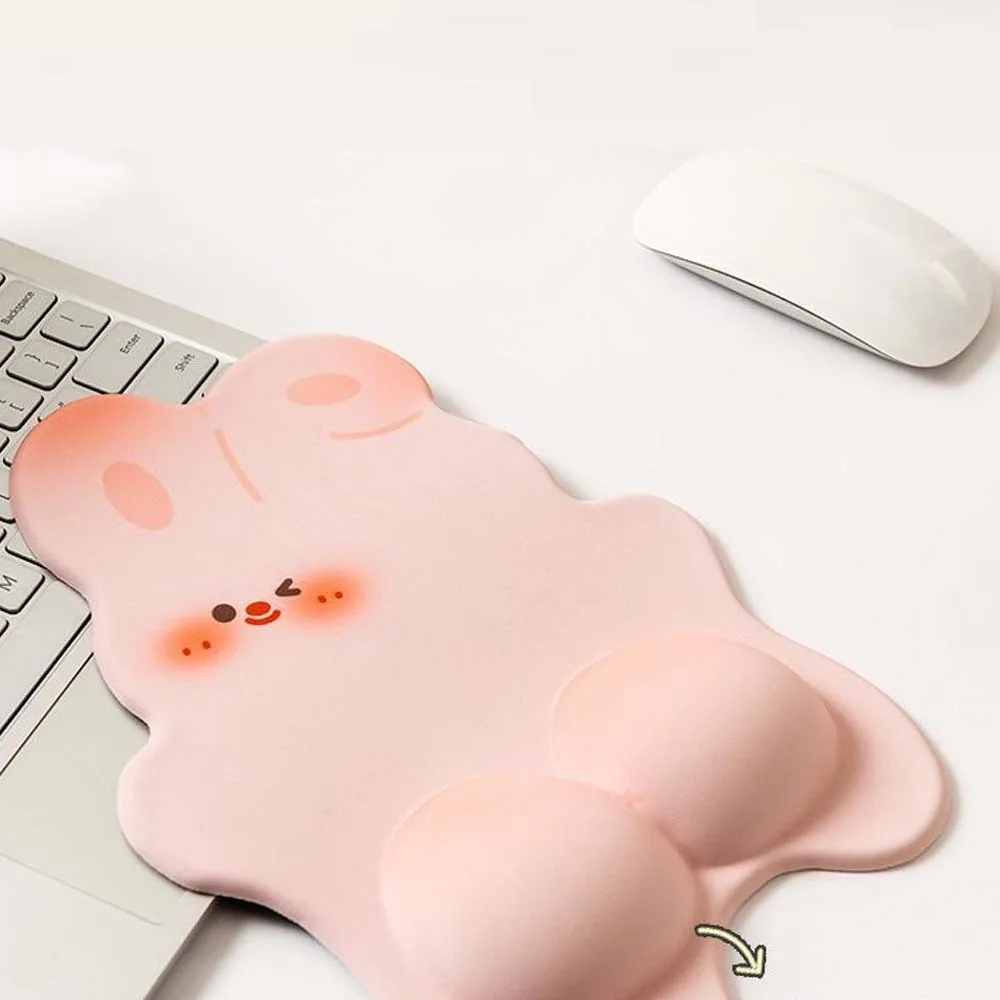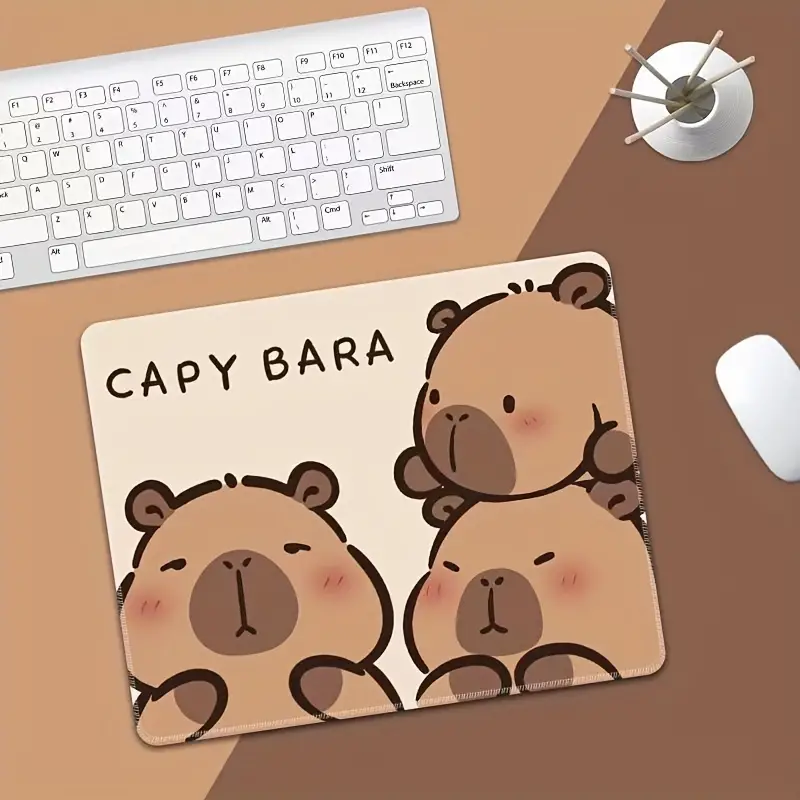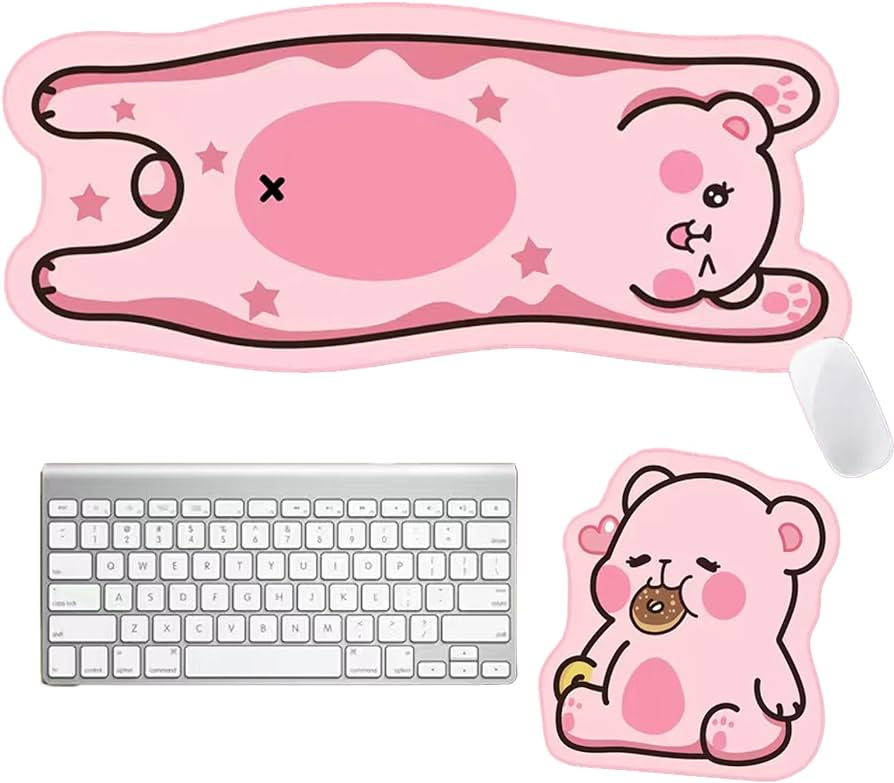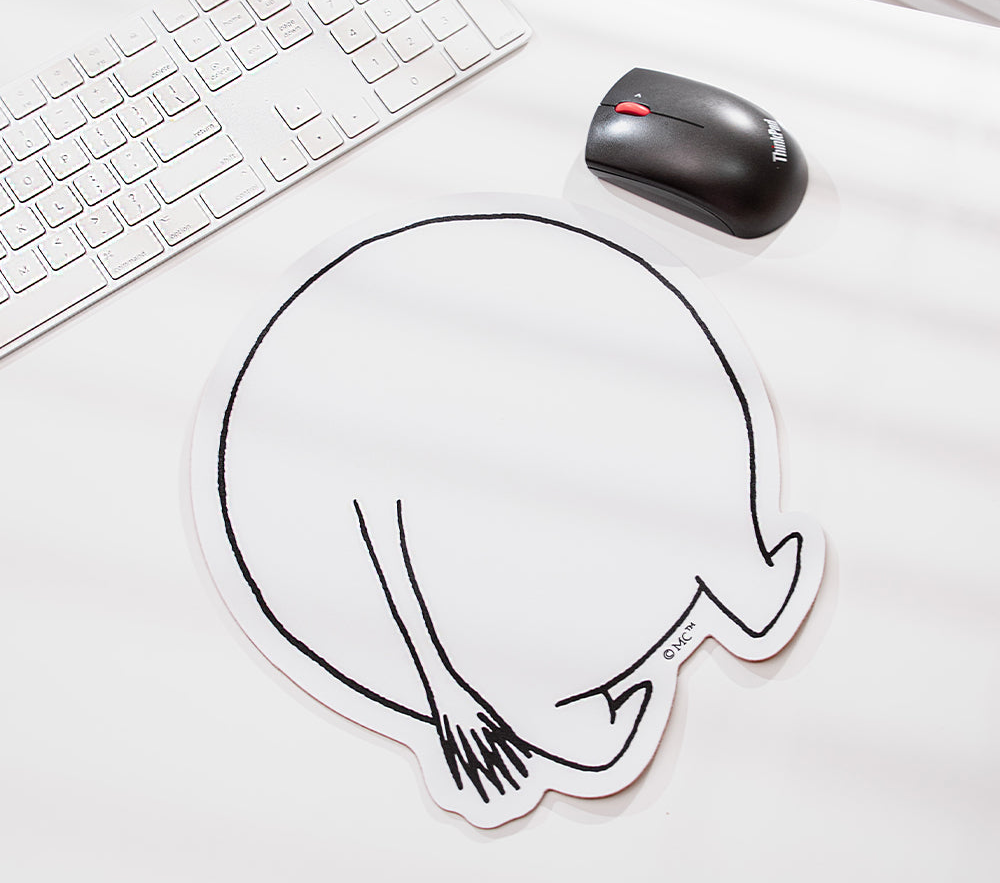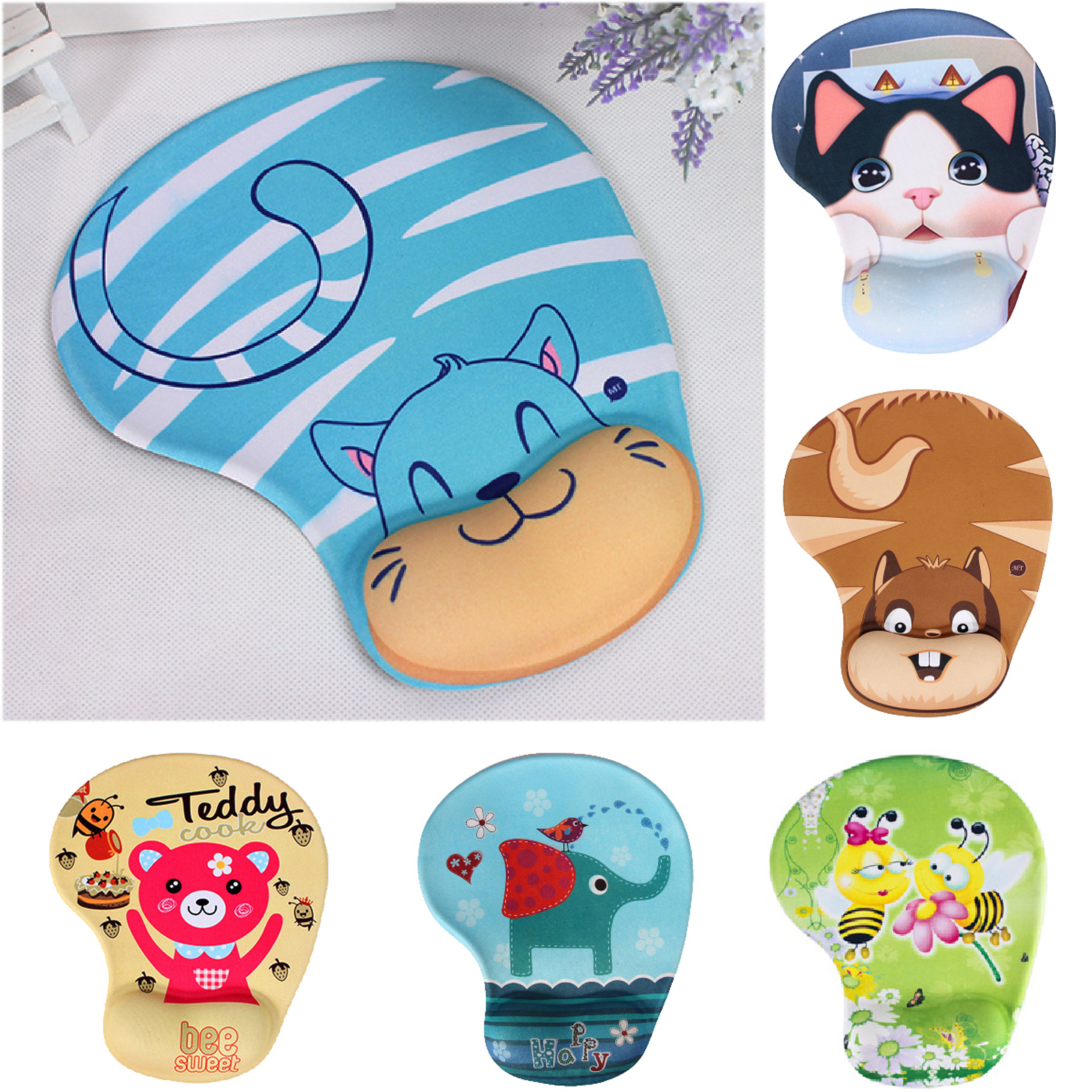Introduction to Mouse Pads
Mouse pads have become essential accessories in the world of computing, enhancing the precision and comfort of both everyday users and professionals. They are no longer viewed as mere functional tools but have evolved into items that reflect personal style and technological innovation. This comprehensive guide explores the history, technical benefits, material innovations, customization options, and cultural impact of mouse pads. Understanding the profound evolution and significance of mouse pads sheds light on why they remain a vital component in modern desktop setups.
A well-designed mouse pad can significantly improve user experience by providing a smooth and consistent surface for mouse movements. This seemingly simple accessory plays a crucial role in optimizing productivity, gaming performance, and ergonomic comfort. As we delve into the myriad aspects of mouse pads, we begin to appreciate their importance and versatility, making them indispensable elements in the world of computing.
History and Evolution
Early Beginnings
The concept of the mouse pad emerged alongside the invention of the computer mouse in the early 1960s. Douglas Engelbart introduced the computer mouse as an input device to facilitate human-computer interaction. Initially, the surfaces on which the mouse operated were not optimized for smooth and accurate movements. This led to the creation of the first mouse pads, which were rudimentary in design and made from simple materials like rubber and foam.
Early mouse pads aimed to provide a stable and non-slip surface, ensuring that the mouse functioned efficiently. These initial designs laid the foundation for subsequent innovations in mouse pad technology. As computers began to proliferate in offices and homes, the demand for better-performing mouse pads grew, prompting manufacturers to explore new materials and designs.
Technological Advancements
The evolution of mouse pads has closely followed advancements in computer technology. The shift from mechanical mice with rubber balls to optical and laser mice necessitated improvements in mouse pad surfaces. Optical and laser sensors required smooth and consistent textures to detect movement accurately, leading to the development of specialized mouse pad materials.
Over the years, manufacturers have introduced various innovations, such as hard plastic surfaces for gamers, soft cloth pads for general use, and even hybrid designs that combine the best of both worlds. Textured surfaces, enhanced tracking capabilities, and ergonomic designs have become standard features in modern mouse pads. The continuous evolution of mouse pad technology reflects the growing recognition of their importance in improving user experience.
Ergonomic Considerations
Ergonomics has played a significant role in the evolution of mouse pads. As the use of computers became more widespread, concerns about repetitive strain injuries and musculoskeletal disorders emerged. Ergonomically designed mouse pads aim to alleviate these issues by providing wrist support and promoting natural hand positions.
Gel-filled wrist rests, memory foam padding, and contoured designs are examples of ergonomic features that enhance comfort and reduce strain during prolonged computer use. These innovations demonstrate the industry’s commitment to addressing health concerns and improving user well-being. Ergonomically designed mouse pads underscore the importance of comfort and health in the modern workspace, highlighting their continued relevance and significance.
Technical Benefits
Enhanced Precision and Accuracy
One of the primary technical benefits of using a mouse pad is the enhanced precision and accuracy it provides. A good mouse pad offers a consistent and smooth surface that allows the mouse sensor to track movements accurately. This is particularly important for tasks that require fine control, such as graphic design, photo editing, and gaming.
The material and texture of the mouse pad play a crucial role in determining its performance. High-quality fabrics, micro-textured surfaces, and optimized coatings ensure that the mouse glides smoothly and responds accurately to user inputs. This precision is essential for professionals who rely on accurate cursor movements, as well as gamers who require quick and precise actions. The technical benefits of mouse pads contribute to improved productivity and performance across various applications.
Durability and Longevity
Durability is another significant benefit of modern mouse pads. High-quality materials and construction ensure that mouse pads can withstand daily wear and tear while maintaining their performance. Durable mouse pads feature reinforced edges, non-slip bases, and fade-resistant surfaces that prolong their lifespan.
Durable mouse pads prevent issues such as fraying edges, surface wear, and reduced tracking performance over time. Investing in a high-quality mouse pad results in long-term cost savings and consistent performance, making it a wise choice for both casual users and professionals. The emphasis on durability and longevity in mouse pad design reflects the industry’s commitment to providing reliable and enduring products.
Comfort and Ergonomics
Comfort and ergonomics are critical considerations in the design and functionality of mouse pads. Ergonomically designed mouse pads contribute to a comfortable and productive computing experience by reducing strain on the wrist and hand. Features such as padded wrist rests, contoured shapes, and supportive materials enhance comfort during extended use.
Mouse pads with ergonomic designs promote proper wrist alignment and minimize the risk of repetitive strain injuries (RSIs). The importance of ergonomics in mouse pad design underscores the role these accessories play in maintaining user health and well-being. By providing a comfortable and supportive surface, ergonomic mouse pads contribute to a more enjoyable and sustainable computing experience.
Material Innovations
Cloth and Fabric Mouse Pads
Cloth and fabric mouse pads are among the most popular and widely used options. These mouse pads are typically made from woven fabrics that provide a smooth and consistent surface for mouse movements. Cloth mouse pads offer a balance of comfort, durability, and performance, making them suitable for a wide range of applications.
The softness and flexibility of cloth mouse pads make them comfortable to use and easy to transport. Many cloth mouse pads feature non-slip rubber bases that prevent movement during use, ensuring stability and accuracy. Additionally, these mouse pad designs come in various sizes, colors, and patterns, allowing users to choose options that match their preferences and setups. The versatility and comfort of cloth mouse pads contribute to their enduring popularity.
Hard Surface Mouse Pads
Hard surface mouse pads are designed for users who prioritize speed and precision. These mouse pads are typically made from materials like plastic, metal, or glass, providing a rigid and smooth surface for minimal resistance. Hard surface mouse pads are favored by gamers and professionals who require quick and precise mouse movements.
The smooth and low-friction surface of hard mouse pads allows for effortless gliding, enabling rapid and accurate cursor movements. These mouse pads are also easy to clean and maintain, making them suitable for users who prioritize hygiene and durability. The emphasis on speed and precision in hard surface mouse pads makes them an ideal choice for high-performance applications. The variety of materials available in hard surface mouse pads ensures that users can select options that best meet their needs and preferences.
Hybrid and Specialty Mouse Pads
Hybrid and specialty mouse pads combine features from both cloth and hard surface designs to offer a balanced performance. These mouse pads often feature a dual-surface design, with one side offering the softness of cloth and the other providing the rigidity of a hard surface. This versatility allows users to switch between different surfaces based on their specific needs and preferences.
Specialty mouse pads cater to niche markets and specific user requirements. Examples include oversized mouse pads for expansive workspaces, RGB-illuminated mouse pads for gaming setups, and eco-friendly options made from sustainable materials. These innovative designs reflect the diverse needs of modern users and highlight the versatility of mouse pads in meeting various demands. Hybrid and specialty mouse pads demonstrate the industry’s ability to adapt and innovate, providing solutions that cater to unique user preferences and requirements.
Customization and Personalization
Personalized Design Options
Customization and personalization options have become significant trends in the mouse pad market. Many users seek to express their individuality and style through personalized mouse pads, featuring custom designs, logos, text, or artwork. This level of customization allows users to create unique products that reflect their personality and preferences.
The availability of online platforms and services that offer custom mouse pad designs has made personalization more accessible. Users can upload their images, choose colors, and add text to create one-of-a-kind mouse pads. Personalized mouse pads make great gifts, promotional items, and branding tools, offering both aesthetic appeal and functionality. The trend toward customization highlights the importance of personal expression in modern computing accessories.
Corporate and Branding Uses
Corporate and branding uses of mouse pads are another significant aspect of customization. Companies often use branded mouse pads as promotional items, giveaways, and corporate gifts. These mouse pads feature company logos, slogans, and branding elements, serving as effective marketing tools that increase brand visibility and recognition.
Branded mouse pads are commonly used in offices, trade shows, and events, providing a practical and cost-effective way to promote a company. They offer a consistent branding presence in workspaces, reinforcing the company’s identity and message. The use of branded mouse pads in corporate environments underscores their versatility and effectiveness as marketing tools. By combining functionality with branding, companies can create memorable and impactful promotional products.
Artistic and Creative Expressions
Artistic and creative expressions through mouse pad designs have gained popularity among artists, designers, and enthusiasts. Custom mouse pads serve as canvases for artistic creations, allowing individuals to showcase their work and creativity. This trend has led to collaborations between mouse pad manufacturers and artists, resulting in unique and limited-edition designs.
Creative mouse pad designs can feature anything from intricate illustrations and digital art to photography and abstract patterns. The ability to create and use custom designs encourages artistic expression and adds a personal touch to workspaces. This trend reflects the growing appreciation for art and creativity in everyday items, transforming mouse pads into functional pieces of art. Artistic and creative mouse pads demonstrate the fusion of technology and design, offering a platform for personal and artistic expression.
The Cultural Impact
Gaming and Esports
The rise of gaming and esports has significantly impacted the mouse pad market. Pro gamers and esports enthusiasts prioritize performance and precision, driving demand for high-quality mouse pads designed specifically for gaming. These gaming mouse pads often feature advanced materials, optimized surfaces, and unique designs that cater to the needs of competitive players.
Gaming mouse pads are designed to provide the speed, accuracy, and durability required for high-intensity gaming sessions. Features such as anti-slip bases, stitched edges, and expanded sizes cater to the preferences of gamers who seek optimal performance. The influence of gaming and esports on the mouse pad market highlights the role of these accessories in enhancing gaming experiences. Mouse pads designed for gaming underscore the importance of precision and performance in competitive and recreational gaming.
Work from Home Trends
The shift towards remote work and work-from-home trends has increased the demand for ergonomic and functional mouse pads. As more individuals set up home offices, the need for comfortable and supportive accessories has become paramount. Ergonomic mouse pads with wrist rests, extended sizes, and durable materials cater to the needs of remote workers who spend long hours at their desks.
The importance of creating a productive and comfortable home workspace has led to greater emphasis on quality and ergonomic design in mouse pads. Remote workers seek accessories that enhance comfort and reduce strain, making ergonomic mouse pads essential components of home office setups. The work-from-home trend underscores the evolving needs of modern professionals and the role of mouse pads in meeting those needs. As remote work continues to grow, the demand for high-quality and ergonomic mouse pads is likely to increase.
Pop Culture and Collectibles
Mouse pads have also become collectibles and expressions of pop culture. Limited-edition mouse pads featuring popular characters, themes, and franchises attract collectors and enthusiasts. These designs often feature artwork from movies, TV shows, comics, and video games, transforming mouse pads into collectible items that celebrate pop culture.
Collaborations between mouse pad manufacturers and entertainment franchises result in unique and highly sought-after designs. Collectors value these limited editions for their artistic appeal and connection to beloved cultural phenomena. The trend of collectible pop culture mouse pads highlights the integration of technology and entertainment, offering fans a tangible way to express their interests. Pop culture mouse pads demonstrate the fusion of functionality and fandom, catering to the preferences of enthusiasts and collectors.
The Future of Mouse Pads
Sustainable and Eco-Friendly Designs
Sustainability and eco-friendly designs are likely to play a significant role in the future of mouse pads. As environmental concerns grow, manufacturers are exploring sustainable materials and production methods to reduce environmental impact. Mouse pads made from recycled materials, biodegradable options, and eco-friendly packaging reflect the industry’s commitment to sustainability.
Consumers increasingly prioritize eco-friendly products, driving demand for sustainable mouse pads. Brands that emphasize sustainability can appeal to environmentally conscious consumers and contribute to positive environmental outcomes. The trend toward sustainable and eco-friendly designs underscores the importance of responsible production and consumption in the technology industry. By embracing sustainability, the mouse pad industry can align with broader environmental initiatives and contribute to a more sustainable future.
Technological Integration
Technological integration is expected to shape the future of mouse pads, with innovations that enhance functionality and user experience. Mouse pads with built-in wireless charging, smart sensors, and interactive features represent the next frontier in mouse pad technology. These advancements offer new possibilities for convenience and productivity, transforming mouse pads into multifunctional devices.
Wireless charging mouse pads allow users to charge their devices effortlessly while working or gaming. Smart sensors can track user movements and provide insights into productivity and ergonomics. Interactive features, such as customizable LED lighting and touch-sensitive controls, add a new dimension to mouse pad functionality. The integration of technology into mouse pads reflects the ongoing evolution of computer accessories, offering enhanced capabilities and user experiences.
Personalization and Customization
Personalization and customization will continue to be significant trends in the mouse pad market. The ability to create unique and personalized designs caters to the growing desire for individual expression and customization. Enhanced printing techniques, innovative materials, and bespoke design services will drive the future of personalized mouse pads.
Consumers seek products that reflect their personal style and preferences, making customization a key aspect of modern retail experiences. Personalized mouse pads offer a tangible way to express individuality and creativity, enhancing the appeal of these accessories. The trend toward personalization and customization highlights the importance of user-centered design and the evolving preferences of consumers. By offering diverse customization options, the mouse pad industry can meet the needs and desires of a wide range of users.
Conclusion: The Enduring Relevance of Mouse Pads
Mouse pads have evolved from simple functional tools to essential accessories that enhance precision, comfort, and personal expression. Their rich history, technical benefits, material innovations, customization options, and cultural impact highlight their enduring relevance in modern computing. The continuous evolution of mouse pad design and technology reflects the industry’s commitment to meeting diverse user needs and preferences.
Whether admired for their ergonomic features, collected for their artistic designs, or cherished for their personalization options, mouse pads remain vital components in the world of computing. Their ability to improve user experience, adapt to changing trends, and reflect individual personalities ensures that they will continue to be indispensable accessories for years to come. As technology advances and user needs evolve, the mouse pad will remain a symbol of innovation, comfort, and expression in the digital age.
